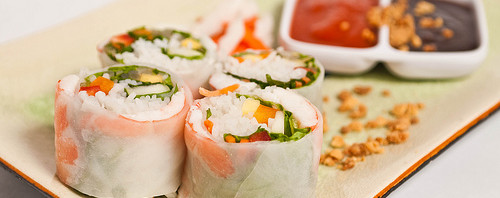If there’s one thing Millennials like to consider themselves, it’s the “foodie” generation. In fact, their appetites are changing the entire culinary landscape. They’re driving the evolvement of restaurants, demanding customized menu items, and craving unique foods and flavors. Additionally, food has become way more than just satisfying appetites; it has become a social necessity.
Unlike previous generations, Millennials now have the capability to use food as a method of personal storytelling and self-expression. A range of social media platforms allow them to instantly snap pictures of their savory plates, follow their favorite food blogs, and check in at the trendiest, new restaurant. No wonder 50 percent of Millennials now refer to themselves as foodies.
With this in mind, researchers and restaurants alike are innovating new ways to satisfy these culinary connoisseurs’ tastebuds. Below are three of the latest trends in the food industry.
1. Food-friendly content goes digital
 Food and Wine magazine tapped into the Millennial foodie market with the release of its new digital brand and website, FWx. FWx caters to the Millennials obsessed with eating, drinking, and everything in between by connecting them with the latest trends in the food and beverage industry. In addition, readers can find a wide array of information ranging from lifestyle tips to social cheat sheets.
Food and Wine magazine tapped into the Millennial foodie market with the release of its new digital brand and website, FWx. FWx caters to the Millennials obsessed with eating, drinking, and everything in between by connecting them with the latest trends in the food and beverage industry. In addition, readers can find a wide array of information ranging from lifestyle tips to social cheat sheets.
For example, readers can find more than just cocktail recipes. They can find advice such as, “10 Ways to Fool People Into Thinking You Know About Wine” and “7 Drinks to Go with Your Junk Foody Oscars Spread.” The site has filled a niche where Millennials can both embrace their love for food and also find content that connects food with other aspects of their lifestyles.
But content isn’t the only factor that will attract these young food enthusiasts. FWx has created an online format that accommodates Millennials’ preferred presentation of information. Rather than wordy articles, you’ll see short posts, BuzzFeed style lists and video clips.
This includes the Cappuccino Cam, which takes viewers behind the scenes for a look at baristas showing off their skills and FWxLabs where editors take requests for food experiments. The site will also offer #FWxRaps where one contributor takes requests and makes fantasy food raps. Plus, each piece of content provides easy ways for readers to contribute and to share on virtually all social media platforms.
2. A rising demand for locally grown food
The National Restaurant Association recently released a report that identified locally sourced meats and seafood, followed by locally grown produce as the hottest trend in 2014. Although the definition of local food is not homogeneous for the entire generation, Millennials generally feel that purchasing brands with keywords like “grass-fed” and “organic” can have far reaching impacts. They are proud of their food-conscious purchases, and even more so, feel that their money is contributing to a greater good.
Many brands are already implementing this strategy. Take Chipotle, for example. Chipotle prides itself as a company that organically benefits both people and the environment. It even created a game that brings light to the issue of consumerism and a film that offers alternatives to environmental unsustainability.
 3. Popularity of the food truck
3. Popularity of the food truck
The food truck craze has become a worldwide phenomenon. They’re a hit with Millennials for a number of reasons including convenience, low prices, and often times extremely unique foods and flavors-a Millennial favorite. Ranging from earl grey ice cream to red velvet waffles with cream cheese icing, these food truck menus are satisfying Millennial taste buds in every city.
Lauren Katz contributed to this post.
Photo Credit: FWx, Flickr via majunznk & NickNguyen


